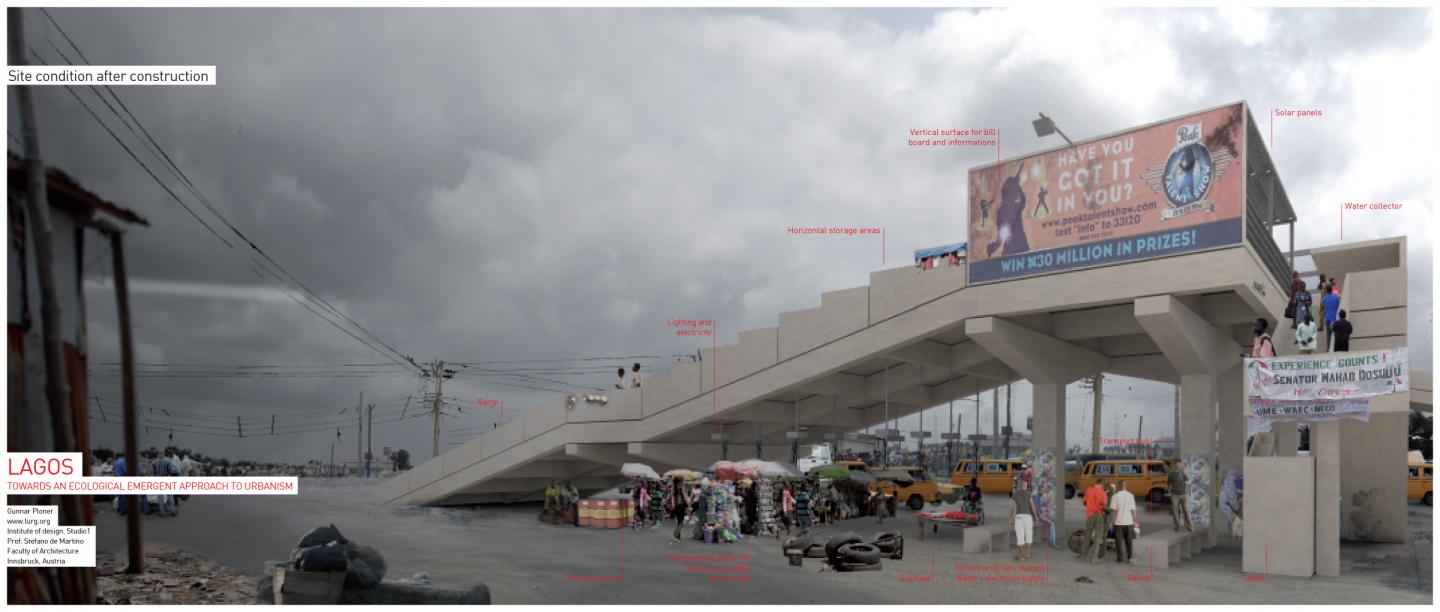The work focuses on the phenomenon of fast emerging megacities in developing countries and the emergence of space within the dynamic field of a high speed urbanism and seeks to develop new intervention strategies and tools for urban planning.
To illustrate the emergence of space, the unfolding of inherent urban processes and spatial situations identifies complex urban phenomena.
The research is based on first-hand investigation in the megacity of Lagos, Nigeria.
To provide a view on the deeper topology and functionality of the spatial agglomeration, the analysis of urban sites seeks to detect urban ecologies, affecting the configuration of the urban fabric.
The performance of the spatial entity shows that infrastructure and public space are key devices for the functionality and development of the urban environment.
The project aims to develop sustainable responsive urban planning methods which are initiating and gradually mediating disparate forces in fast changing urban environments. Introducing emerging bottom-up strategies as tools for urban planning, the project proposes development across multiple scales and layers.
The intervention using the example of a bridge demonstrates one method for an immediate strategic bottom-up approach to create a device which initiates a harmonious development of the urban field. The integration of a flexible and light weight reactive system is able to create conditions for the coexistence of multiple, simultaneous processes and to respond to high speed urban dynamics. Short construction periods, low production costs and a resourceful use of urban space are mandatory for a sustainable planning solution.
The multidimensional approach of the intervention operates across different scales and seeks to strengthen performing linkages and interferences of space and programs.
2010
2010









